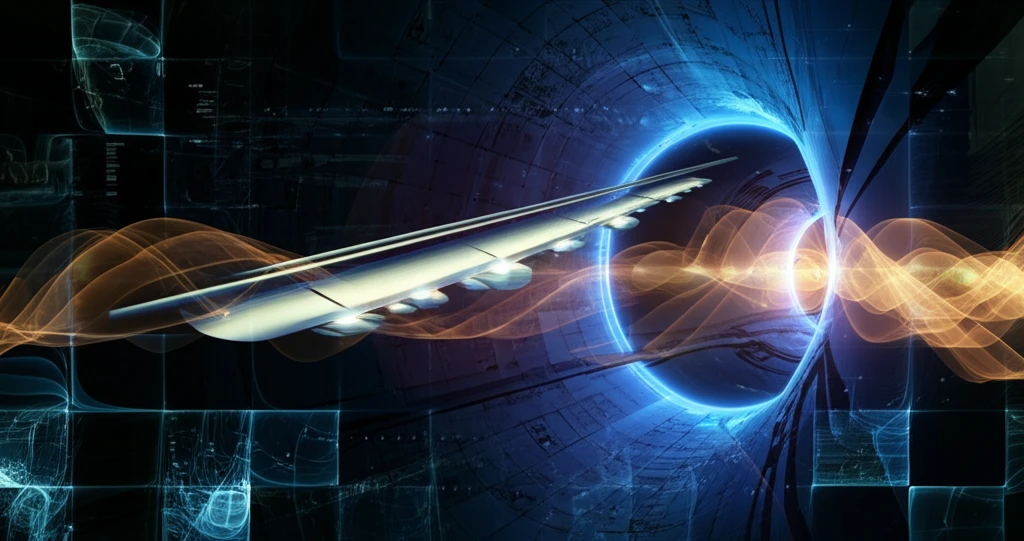
The Hidden Forces Shaping Our World: How Turbulence Models Impact Engineering and Beyond
"Uncover the secrets of turbulent boundary layers and their profound influence on everything from aircraft design to climate modeling."
Turbulence. It’s not just for chaotic weather patterns. It's a fundamental aspect of fluid dynamics that touches nearly every part of our lives, from the efficiency of an airplane wing to the mixing of fluids in industrial processes. Understanding and predicting turbulent flow is essential, but it’s also incredibly challenging. This is where turbulence models come into play, acting as vital tools for engineers and scientists.
Imagine trying to design a new, fuel-efficient aircraft. The flow of air over the wings is turbulent, and this turbulence creates drag, reducing efficiency. To optimize the wing design, engineers use computational fluid dynamics (CFD) software, which relies on turbulence models to simulate this complex flow. The accuracy of these models directly impacts the performance of the aircraft. The same principle applies to designing efficient wind turbines, predicting pollutant dispersion in the atmosphere, and even optimizing the flow of blood in artificial hearts.
In the realm of turbulent flow, one particularly challenging scenario arises when dealing with an adverse pressure gradient (APG). This occurs when the pressure increases in the direction of the flow, causing the fluid to decelerate. Think of air flowing over the curved surface of an airplane wing – as the wing curves upward, the air has to slow down, creating an APG. Predicting how a turbulent boundary layer behaves under these conditions is crucial because it can lead to flow separation, which dramatically reduces efficiency and can even cause catastrophic failures. This article delves into a fascinating experiment focused on understanding and modeling turbulent boundary layers under adverse pressure gradients, highlighting its importance for improving the reliability and performance of numerous engineering applications.
The Quest for Accurate Turbulence Models: An Experimental Approach

The heart of the matter lies in improving the accuracy of Reynolds-Averaged Navier-Stokes (RANS) turbulence models. RANS models are a computationally efficient way to simulate turbulent flows, making them widely used in engineering design. However, they rely on approximations that can sometimes lead to inaccuracies, especially in complex flow situations like those involving adverse pressure gradients. The experiment described in the original paper focuses on providing high-quality data that can be used to validate and refine these models.
- Creating a detailed database for validating RANS models.
- Understanding the impact of flow history on turbulence model performance.
- Studying the role of specific terms in the turbulence model equations.
The Ripple Effect: Why Improved Turbulence Models Matter
The implications of this research extend far beyond the wind tunnel. Better turbulence models translate directly into more efficient and reliable engineering designs. Whether it's designing aircraft that consume less fuel, wind turbines that generate more power, or pipelines that transport fluids with minimal energy loss, accurate turbulence modeling is essential for innovation and sustainability. Moreover, advancements in understanding turbulent flows can also impact climate modeling, leading to more accurate predictions of weather patterns and climate change. This experiment represents a significant step forward in our ability to harness the power of computational fluid dynamics for a wide range of applications, ultimately making our world more efficient, sustainable, and safe.
